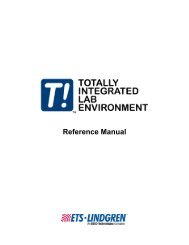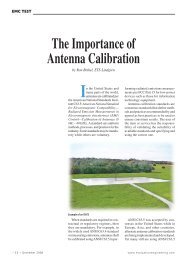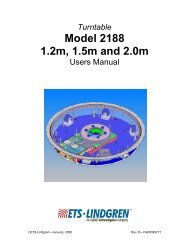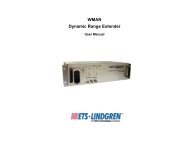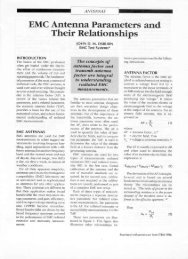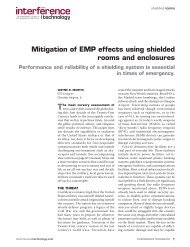Create successful ePaper yourself
Turn your PDF publications into a flip-book with our unique Google optimized e-Paper software.
HIn3637 <strong>Manual</strong> Page — 37<br />
GUIDELINES FOR RF EXPOSURE<br />
To provide a means for judging the significance of<br />
measured magnetic field emissions found near VDT's, the<br />
scientific literature can be examined for information on<br />
suggested exposure or emission limits. The exposure<br />
standards reviewed at the time of this manual's<br />
preparation apply to humans for the purpose of<br />
establishing safe working or living environments where<br />
magnetic fields exist. The exposure limits compiled in<br />
this manual are those found that correspond most closely<br />
to the predominant frequency range of VDT's. In some<br />
cases, the standards apply to occupational exposure<br />
environments and in other cases, to the general living<br />
environment; often standards for this latter case are<br />
referred to as general population or public exposure limits.<br />
Traditional approaches to radiation protection, principally<br />
derived from ionizing radiation protection practices,<br />
usually differentiate between occupational and public<br />
exposure. Generally, occupational exposure limits are<br />
higher, i.e., more permissive, than public limits. This is<br />
because of the greater uncertainties associated with the<br />
general public; in the work place, employees are generally<br />
healthier, and possible exposure to potentially hazardous<br />
physical agents is usually under much better control. For<br />
example, employers can inform workers of situations<br />
which should be avoided; this is not the case for the<br />
general population. Regardless of these considerations,<br />
it is informative to examine some of the recommended<br />
exposure guides that apply to different organizations<br />
and/or countries.<br />
Table 1 summarizes the electromagnetic field exposure<br />
standards found in the literature that either directly apply<br />
to the frequency range appropriate to VDT emissions or<br />
pertain to a frequency range close to that of interest. As<br />
can be seen, the primary difficulty in applying many RF<br />
exposure standards to VDT emission levels is that the<br />
applicable frequency range of the standards does not<br />
extend low enough. From the literature searched, only<br />
one reference was found that offered a quantitative<br />
emission limit as a guideline specific to VDT's (Telecom,



